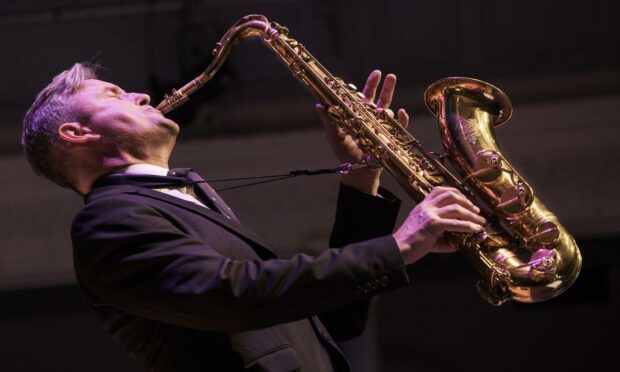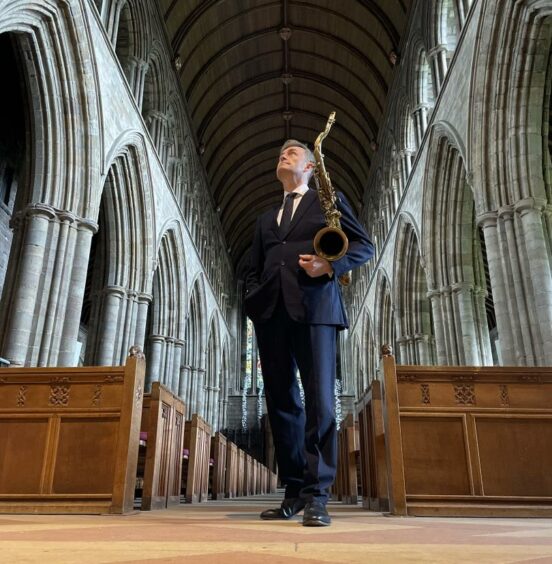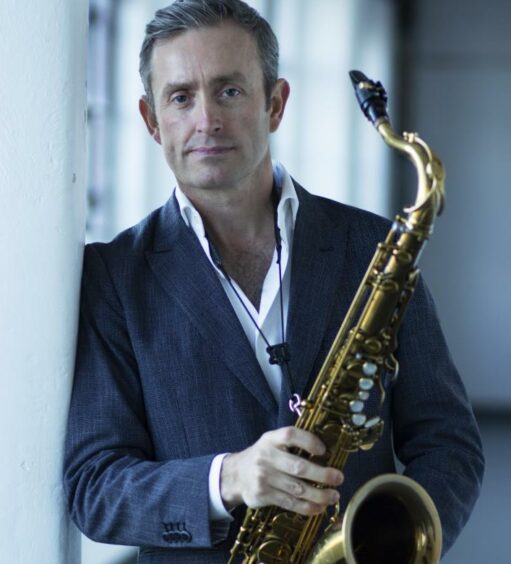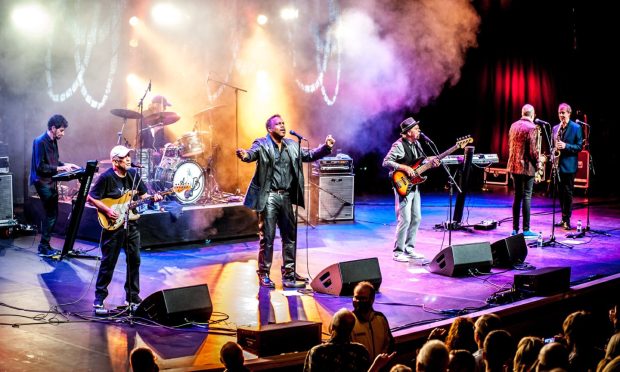Saxophonist Tommy Smith feels a sense of freedom as he prepares for his solo concert in Dunfermline Abbey this Sunday afternoon.
As the Scottish National Jazz Orchestra’s artistic director, concert days for Smith usually involve ensuring another 15 or 16 musicians know where they have to be and when they have to be there.
Even after 25 years in the role, he still also drives the van with the sound equipment to the gig.
He sets up the PA and microphones, puts out the music stands and ensures everyone is rehearsed and has the parts they’re going to play in the correct order.
Playing solo is a breeze
So, playing solo saxophone in the historic church’s natural acoustics is comparatively easy.
Smith just has to organise the tunes he’s going to play, which he usually does on the hoof, choosing melodies that suit the mood and the atmosphere in the room as he plays.
“I know lots of tunes, thank goodness, so each solo concert is different from the previous one,” he says.
“I see these concerts in churches as celebrations of melody.
“They might also be seen as a chance for contemplation as people think about what we’ve all been through over the past 18 months and more.
“It’s great that we get to enjoy the possibility of being able to share live music events again after the enforced silence.”
The practicalities of churches
There’s a sense of freedom for the audience as well as for Smith, he says, as one of the reasons he has been playing in cathedrals since the country came out of lockdown is that they’re large and offer plenty of space if people want to maintain a social distance.
In recent weeks he has played concerts in St Machar’s Cathedral in Aberdeen, St Giles’ Cathedral in Edinburgh, Lichfield Cathedral and Dunblane Cathedral.
He played solo in Dunfermline Abbey just over two years ago and has been looking forward to returning since the concert was confirmed.
“The main attraction for me is the sound quality in these venerable buildings,” he says.
A rich history
“Old stones have character and there’s also the history involved in a church like Dunfermline Abbey, where Robert the Bruce is buried.
“I stood just in front of his tomb last time and felt his presence.
“But it’s also very important that people feel safe when they come to a concert these days and the great thing about big churches is, wherever people sit, they’ll be able to hear everything as churches were designed to suit unamplified speech.”
Although he’s best known for leading groups including his “Coltrane” quartet, which celebrates the music of his saxophone hero, John Coltrane, Smith has been playing solo concerts for some 20 years now.
His first solo experience came by accident when his partner for a duo concert missed the ferry and turned up an hour late. Smith reluctantly went onstage alone instead.
He has since recorded a very successful solo album, Into Silence, in Hamilton Mausoleum with its extra-long reverberation and has come to enjoy solo performances.
You’re never really alone
“You’re never entirely alone, really, because it’s like having a conversation with the room,” he says.
“Sometimes the way the sound carries will suggest the next phrase or a rhythm I can improvise on. Or I might be playing one melody when I’ll think of another one that will follow naturally. I enjoy that spontaneity.”
Among the tunes in his “internal jukebox” – as well as favourite jazz ballads and folk songs – are the pieces from the European praise song tradition that featured on the EP, Solow, that Smith released earlier this year.
Learning Gaelic psalms
He has also been learning Gaelic psalms after enjoying the haunting experience of hearing Gaelic psalm singing in a church on Lewis while on holiday with his family.
“All of these things might feature in the concert,” he says. “Or I might play some Erik Satie or Debussy or some pop songs.
“I’m always open to new ideas and I enjoy trying things to see if I can make them work on just this one instrument, the saxophone.
“I’m really looking forward to playing in Dunfermline Abbey again with all these spirits – Robert the Bruce, David l, St Margaret – and its centuries of history. It has such a special atmosphere.”
- Tommy Smith plays Dunfermline Abbey on Sunday, November 7.












